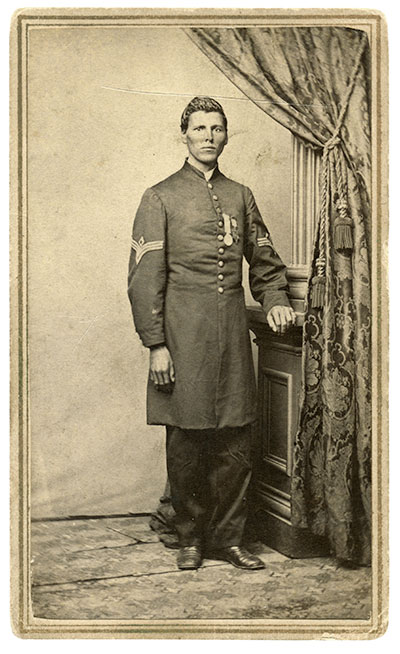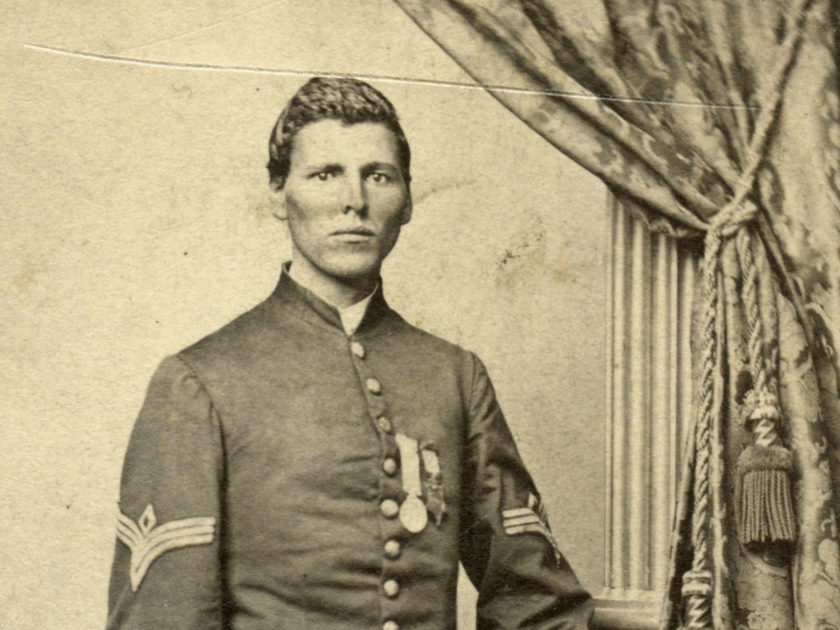
Brave. Aggressive. Fearless. Uncompromising.
A writer once used these words to describe Milton Holland – leadership qualities that came into play when he and his regiment, the 5th U.S. Colored Infantry, went into action in Virginia along the front lines of Richmond and Petersburg in the autumn of 1864.
On Sept. 29, the 5th assaulted New Market Heights, part of the defenses ringing the Confederate capital, which included a fort, extensive earthworks, and two lines of slashed tree branches and brush, or abatis. The African-American troops advanced into severe musket fire and suffered heavy casualties. Four of the 10 company commanders were wounded.
At this critical moment, the soldiers stepped up. Four men, three sergeants and Holland, who had been temporarily assigned as sergeant major, rallied the officer-less companies and led them forward.
Maj. Gen. Benjamin Butler, who commanded the Army of the James, to which the 5th belonged, watched the assault: “The enemy concentrated their fire upon the head of the column. It looked in one moment as if it might melt away. The colors of the first battalion went down, but instantly they were up again but with new color bearers. Wonderfully they managed to brush aside the abatis, and then at double quick the re-formed column charged the second line of abatis. Fortunately they were able to remove that in a few minutes, but it seemed a long time to the lookers on. Then, with a cheer and a yell that I can almost hear now, they dashed upon the fort. But before they reached even the ditch, which was not a formidable thing, the enemy ran away and did not stop.”
Holland and the three sergeants received the Medal of Honor for their actions.
Holland survived the war, married and settled in Washington, D.C., where he spoke out on various issues on behalf of African Americans. He died in 1910 and was buried in Arlington National Cemetery.

